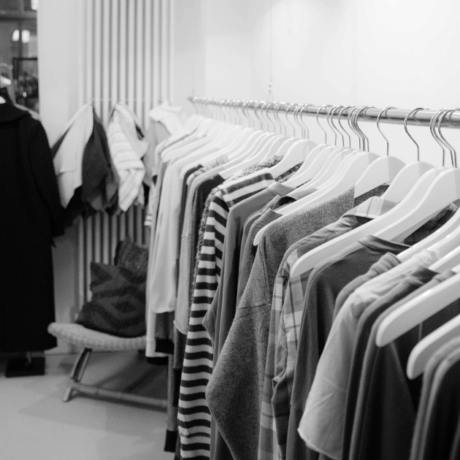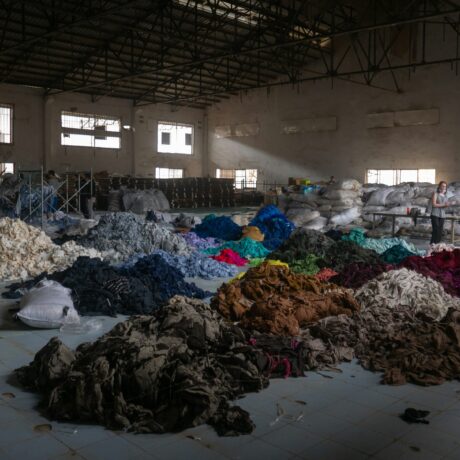Deforestation, illegal mining and lack of transparency: What is happening in the Amazon?
This article was written by Fashion Revolution Brasil. You can read the Portuguese version here.
Deforestation of more than 10,000 km² and humanitarian crisis in the Amazon
In 2022, more than 10,000 km² were deforested in the Amazon region: the equivalent of cutting down nearly 3,000 soccer fields per day of forest. This destruction threatens the region’s biodiversity, rainfall, health and food security for millions of people and further intensifies the effects of the global climate crisis.
Even in the midst of this worrying scenario, none of the 60 brands analysed in the Fashion Transparency Index Brazil 2022 disclose commitments to zero deforestation and only 8% of the brands disclose public lists of their raw material suppliers. Companies have the responsibility to look over their supply chains, identify potential risks and impacts to human rights and the environment, and address them. The lack of visibility on these topics opens up gaps for environmental and social damage to occur.
Based on the idea that development is intrinsically linked to economic growth, increased production capacity and profit, the natural, social and cultural wealth of the Amazon region remains under threat. Indigenous peoples, who act as protectors of forests and shields against deforestation, are having their rights dismantled and their population seriously impacted by the advance of livestock, agriculture and mining.
Next, we bring more information on what is happening in the Amazon and how this devastating scenario relates to fashion.
View this post on Instagram
#WhatsInMyJewelry and the Yanomami tragedy
Data from Map Biomas shows that, between 1985 and 2020, the mined area in Brazil grew six times. This expansion of mining coincides with its advance on indigenous territories and conservation units. From 2010 to 2020, the area occupied by mining inside indigenous lands grew by 495%.
The impacts of deforestation, the destruction of water streams and the illegal extraction of gold is evident in the Yanomami territory. The Yanomami are an indigenous group that lives in the north of the Amazon region and have become the target of a serious humanitarian crisis. In addition to various environmental impacts, the Yanomami face hunger, malnutrition, an increase in cases of malaria and other infectious diseases, mercury contamination and a growth in violence against indigenous people surrounded by illegal mining.
Traceability and transparency in the gold and precious metals supply chain is precarious. The ore extracted clandestinely from Brazilian indigenous lands can end up in jewelry or electronic filaments used around the world. After having its real origin covered up, the metal is mixed with legalized gold in refineries, enters the international market and can be acquired by large global companies without them being able to trace its real origin.
The opaque traceability only reinforces the importance of companies carrying out robust due diligence processes for human and environmental rights in their supply chains. Transparency is needed across the entire fashion value chain. Questioning the origin of what we wear goes beyond just our clothes and should also include our accessories. We should ask the brands #WhatsInMyJewelry
New infrastructure project could worsen local situation
Another example of how the relentless pursuit of profit and increased production efficiency can negatively impact the environment and local communities is a project that is expected to be voted on by the Brazilian Federal Supreme Court at the end of May: the Ferrogrão. The approval of the project could further accentuate the critical situation of devastation in the Amazon.
Ferrogrão is a project for the construction of a railroad of almost a thousand km to transport grain from Mato Grosso to Pará. One of the objectives of the infrastructure project is to increase economic efficiency in the distribution and storage of grains, given the expansion of the Brazilian agricultural frontier.
The project is sold as a green tunnel, but privileges the interests of the agribusiness market to the detriment of the preservation of the environment and the guarantee of ethnic and territorial rights. If it is constructed as planned, Ferrogrão will cross the Jamanxim National Park, a Conservation Unit of Full Protection. The railroad could also intensify land conflicts and potentiate socio-environmental impacts already suffered in the region. At least three ethnic groups would be impacted by the construction of the railroad (Munduruku, Kayapó, Panará) and there is a risk of deforestation of more than 230 thousand hectares.
These and other impacts with the potential to accelerate the expansion of the agricultural frontier and the intensification of the production of commodities based on monoculture and land concentration have already been denounced by indigenous peoples.
Transparency, consciousness and dialogue
Amidst this worrying scenario of devastation, in which biodiversity and local communities remain threatened, we need fashion brands to take a stand and be transparent about the origin and traceability of their products.
We need transparency about where what we consume comes from. We need to rethink the logic of profit. We need a development model that considers the nature and culture of people as a value and an element capable of generating socioeconomic well-being in the long term. We need to include affected peoples in the dialogue for improvements, consulting with them before projects can be approved. We need government oversight and public policies that favor Nature and people.
We invite you to ask the brands #WhatsInMyJewelry, #WhatsInMyJewelry and accessories, demanding transparency about the production processes. You can also make donations to help the Yanomami people and sign this petition against the construction of Ferrogrão.
Further reading
How transparent are the world’s 250 largest fashion brands?
The 2022 Global Fashion Transparency Index
The 2022 Brasil Fashion Transparency Index








